What is the best way to make herbal medicine? Is it tinctures? Teas? Powders? This seemingly simple question is a common debate within herbal circles.
Like everything in nature, the answer isn’t black and white. There is a time and place, and even preference, for all types of herbal medicine. This article is about one my favorite ways to enjoy herbs daily during the hot summer months.
As I write this, the last days of summer are noticeably here. I see it in the changing light as the long yellow hues of daylight fade earlier and earlier each night.
Here in north central Washington State, the air is hot, dry, and, due to a local wildfire, filled with smoke.
I’ve been harvesting big bundles of herbs and baskets full of vegetables. Some things are drying, others are macerating in alcohol or vinegar, and others are being savored in quintessential summer meals like gazpacho.
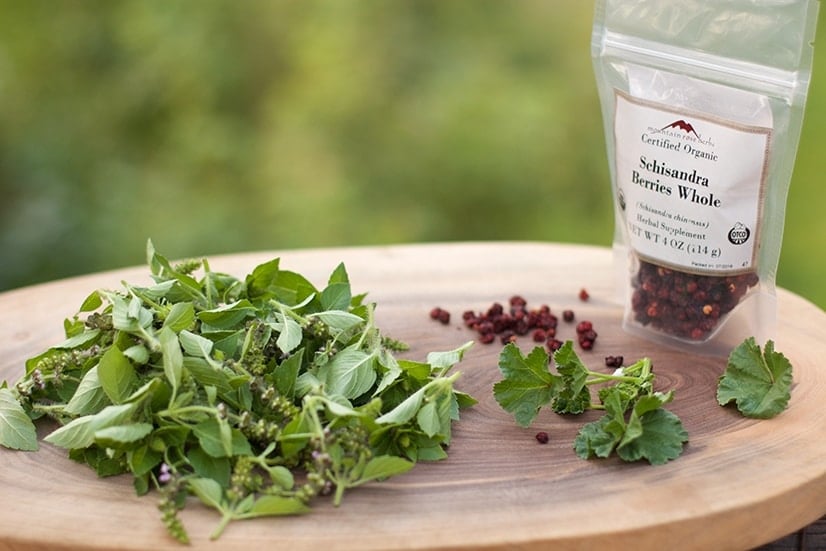
Cool Water Infusions
While this is the traditional time of preserving, I like to take advantage of all the fresh herbal abundance and make cool water infusions with them.
Cool water gently teases out the aromatics of plants, giving the water a very pleasant and fresh taste. It also pulls out the mucilage in demulcent plants, resulting in teas that are cooling and soothing. The taste is completely unlike teas made with hot water, and a lot more practical to make in this hot weather!
Cool water extractions don’t pull out the same qualities as hot water extractions, notably vitamins and minerals. Hot water extractions don’t pull out mucilage as well as cool water extractions, and they alter the aromatic oils within the plants. Again, one isn’t better than the other, simply different.
You can make cool water extractions with practically any lovely aromatic herb. I’ve used rose petals, lavender flowers, anise hyssop, and mints as simples or in combinations. But for the past two years, my favorite herb to use is tulsi. Often times I use it as a simple, and other times I combine it with additional herbs, like in this recipe.
Before we get to the tulsi tea recipe, let’s take a closer look at the herbs we are using.
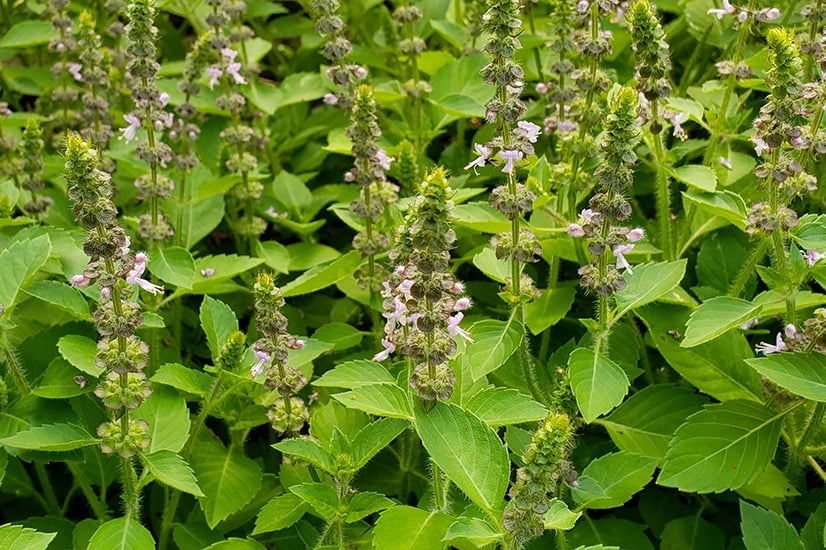
Tulsi (Ocimum sanctum)
Also commonly called holy basil, tulsi is a deliciously aromatic plant that is highly revered in India and Ayurvedic medicine. Its gifts are many! Western herbalists love it as an adaptogen, an herb with broad-ranging benefits, that can be easily grown locally.
Entire books have been written on tulsi! I even include a chapter about it my book, Alchemy of Herbs. And while its benefits are impressive, I’ve come to love it as a cold infused tea during the summer months for several specific reasons.
The first is taste! A cold infusion of tulsi tea is fresh and light. I rarely drink water during the summer months; instead, I make up batches of tulsi tea daily. When you infuse the fresh flower tips of tulsi, there is also a notable demulcent quality to it, which is soothing during the hot arid months of our summers.
Lately, with a wildfire creeping down a local valley, threatening homes and transforming many of my favorite spaces, I’ve also come to rely on tulsi’s relaxing nervine properties. In a clinical trial, tulsi was seen to help people diagnosed with general anxiety disorder.1 Herbalists commonly use it for people experiencing lots of stress with difficulty sleeping.
I prefer tulsi when it’s fresh. If you don’t already grow it, consider doing so next year. If you’d like to try this recipe, check with local farms or gardener friends to see if they have any available. If you aren’t able to find fresh tulsi, you can use the dried herb in this recipe, or you can substitute another fresh mint like lemon balm, peppermint, or spearmint.
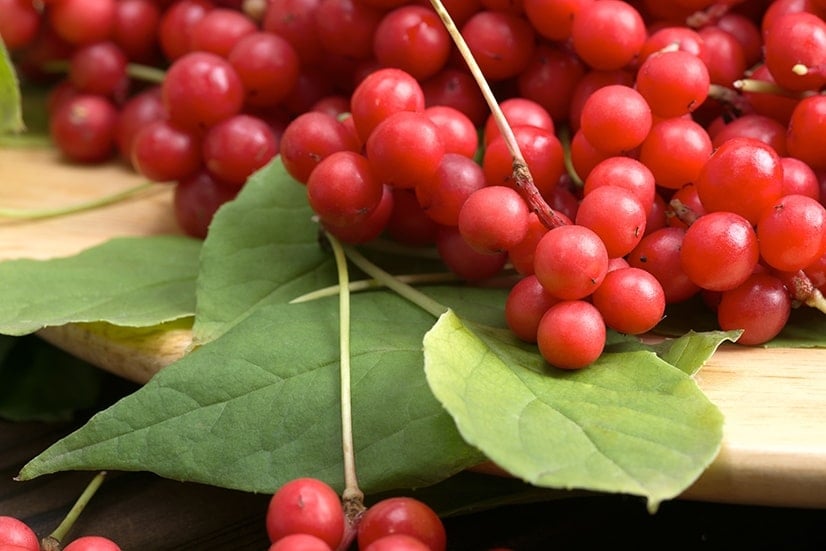
Schisandra (Schisandra chinensis)
Schisandra berries are another herb with countless gifts! They are often combined with other adaptogen herbs and are used to support heart health, modulate inflammation, address negative consequences of long term stress, as well as aid the immune system and the lungs.2 3 4 5
Schisandra berries are famous for having all five tastes of herbal medicine. When prepared as a hot infusion or as a tincture, the taste is pretty … intense! As a cold infusion, they are tart and tasty, reminding me of citrus or hibiscus. This tart taste is wonderfully thirst quenching in the summer heat.

Mallow (Malva neglecta)
Mallow is a common garden weed that is one of our very best demulcent herbs – it even has more mucilage than marshmallow!6 I love adding a bit to my summer teas to soothe any irritated or dried-out tissues. It is especially helpful when there is wildfire smoke in the air.
If you don’t have mallow available, you can also use marshmallow (Althaea officinalis) leaves or roots, either dried or fresh.
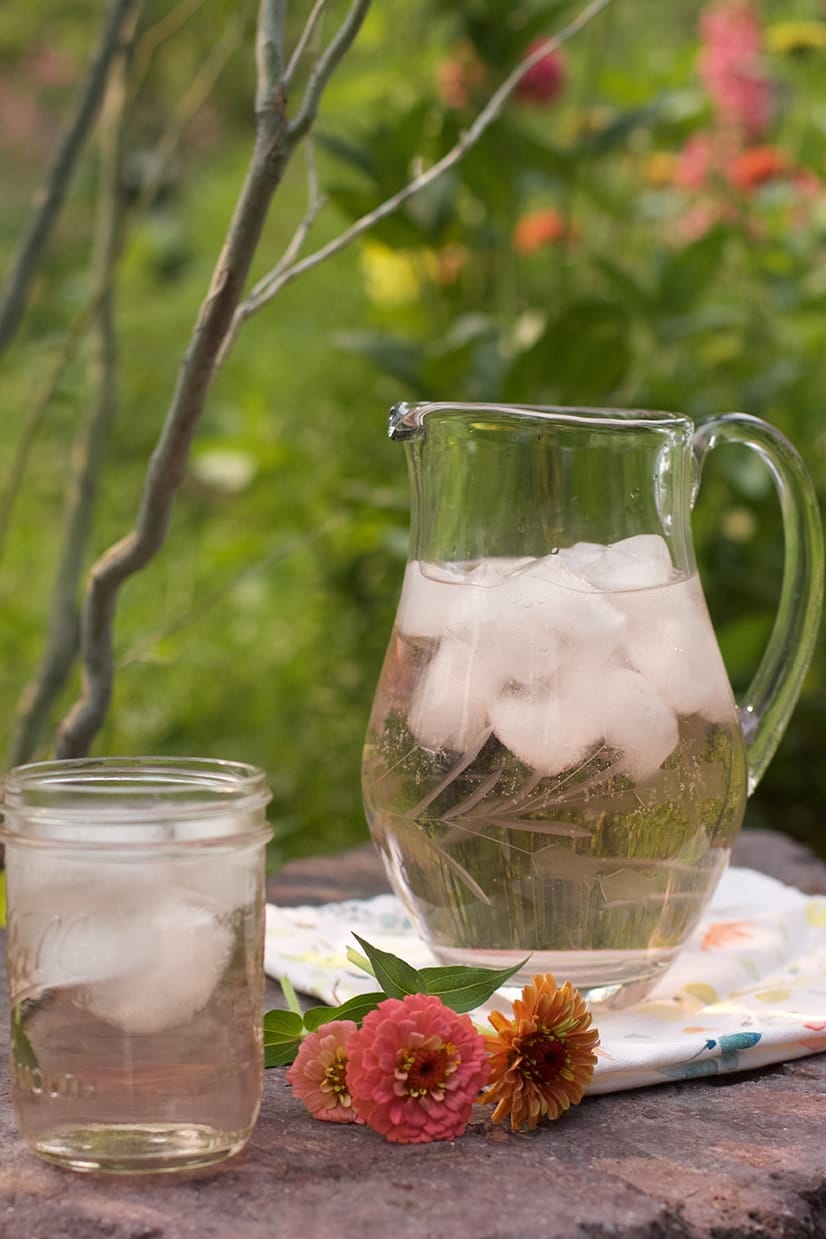
Cold Brew Tulsi Tea
This deliciously fresh and aromatic tulsi tea is perfect for the hot and dry months when you are craving something cooling and soothing. I like to make this up the night before and let it sit until morning. I make up extra batches in the morning for evening guests.
What you’ll need…
- 1/2 cup (30 grams) finely chopped fresh tulsi leaf and flower
- 2 teaspoons (4 grams) dried schisandra berries
- 2 teaspoons (2 grams) finely chopped fresh mallow leaf
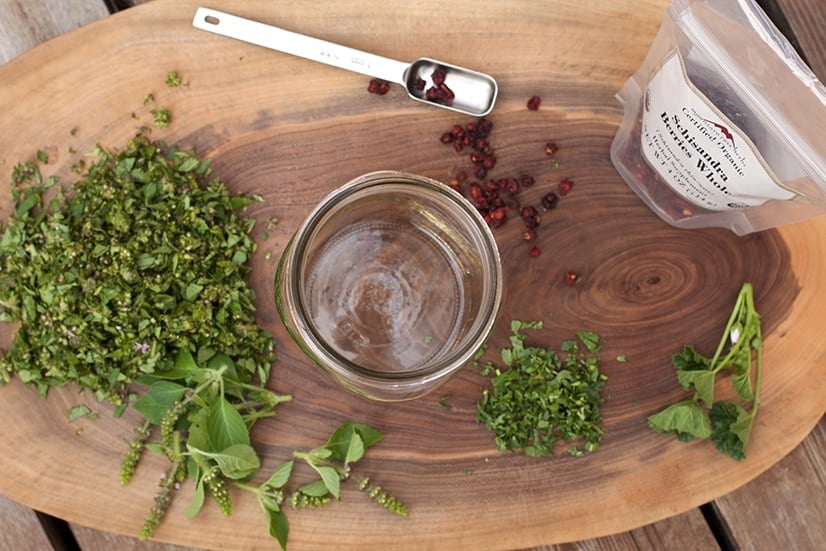
1. Place all the herbs into a quart-sized jar.
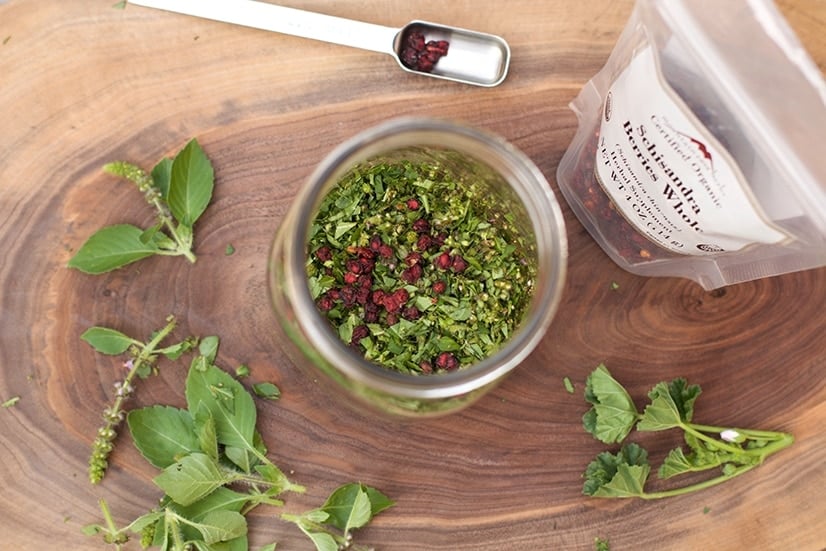
2. Fill the jar with cool water. Cover tightly with a lid. Shake well. Place in the refrigerator for 4 hours or overnight.
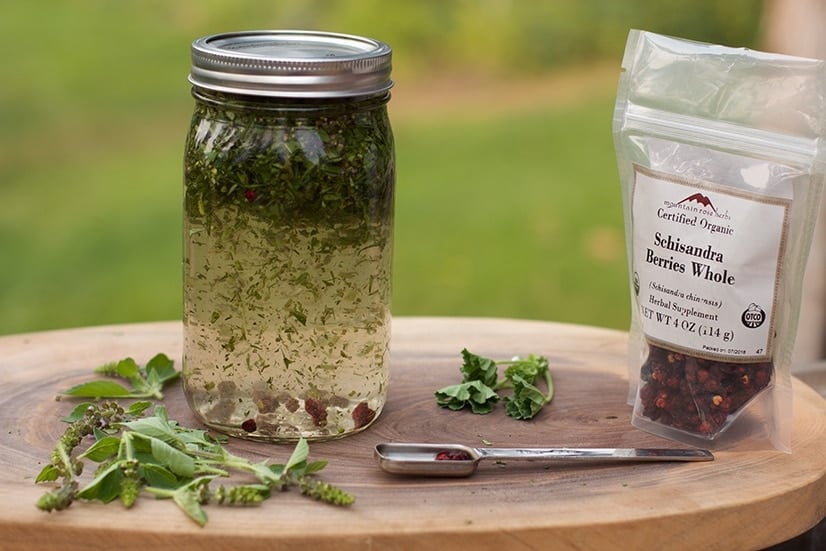
3. Strain off the herbs (you can reuse them, but the flavor will be dulled). Enjoy within 36 hours.
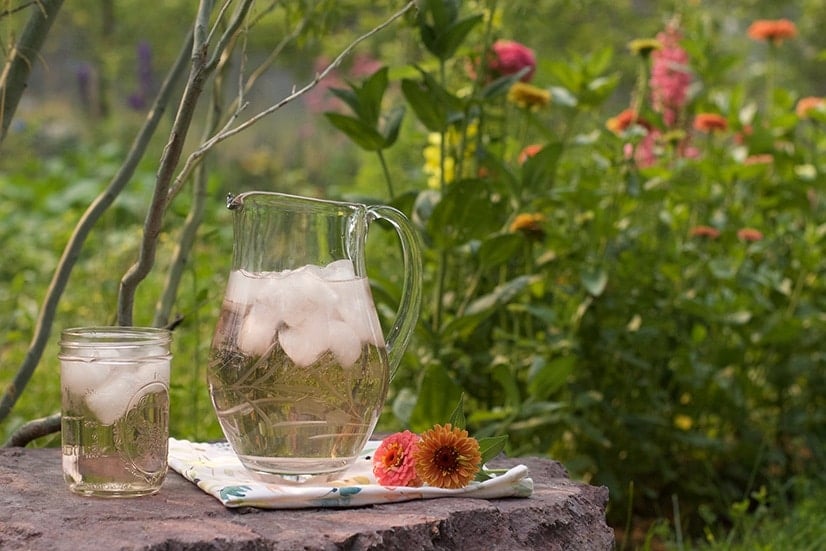
A note on substitutions:
- If you don’t have access to fresh tulsi, try another fresh mint like lemon balm or peppermint.
- You can also use 1/4 cup dried tulsi in place of the fresh tulsi.
- Dried marshmallow root or leaf (Althaea officinalis) can be substituted for the fresh mallow.
- 1 teaspoon dried hibiscus can be used in place of the schisandra berries.
Yield: 3 1/2 cups
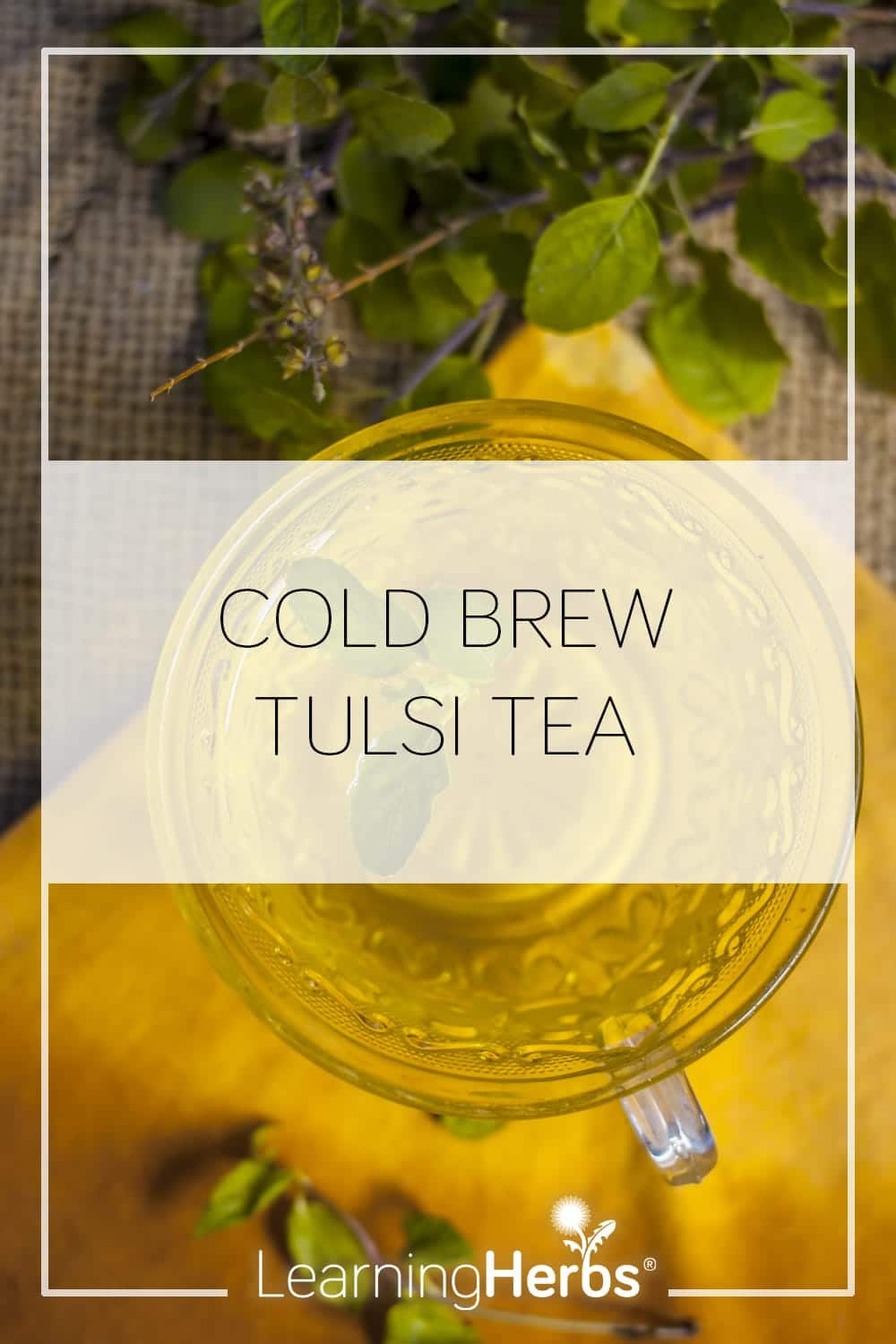
Now I’d love to hear from you!
What are your favorite summer herbs?
Do you drink a lot of cool teas during these hot months?
Let me know in the comments below.



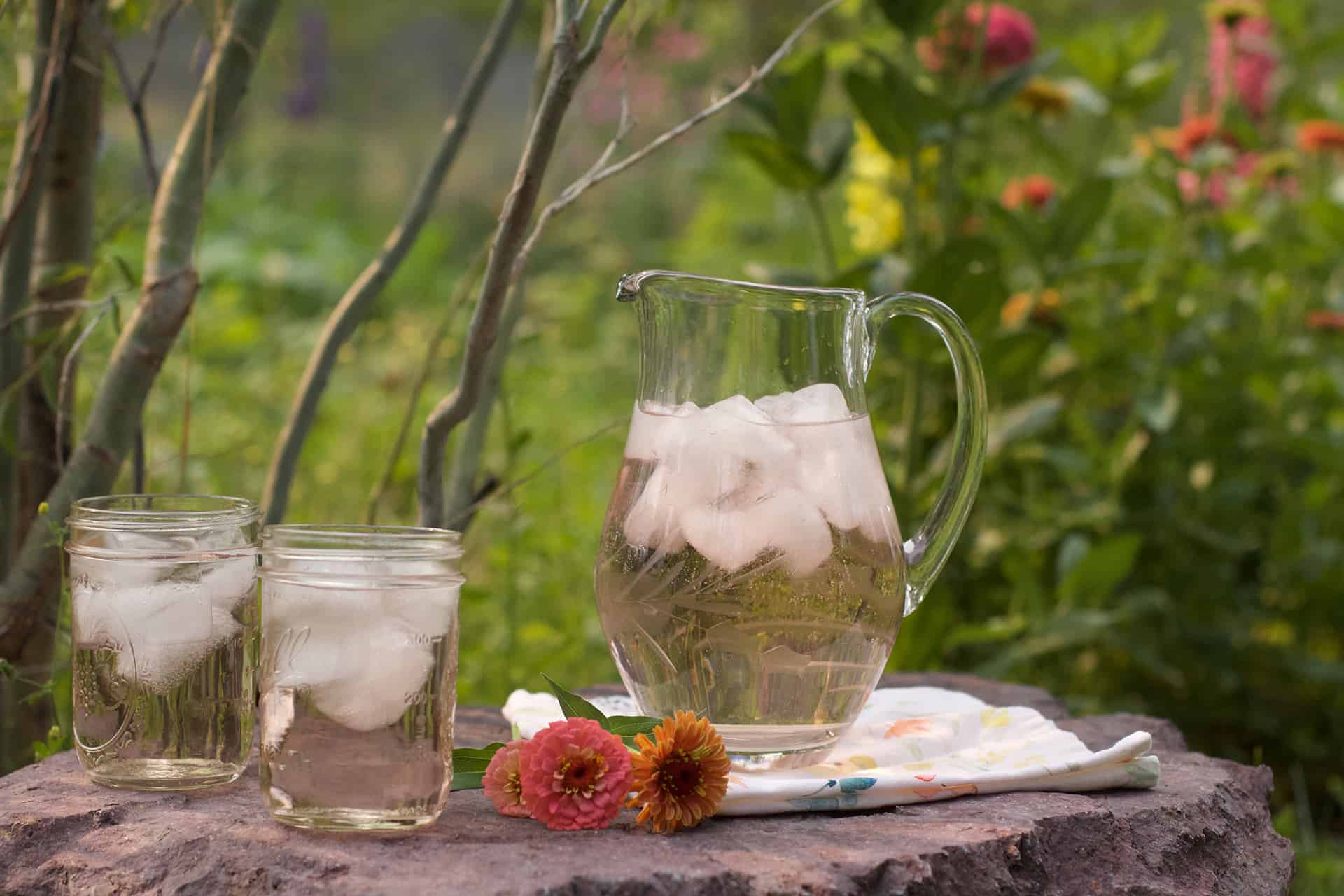


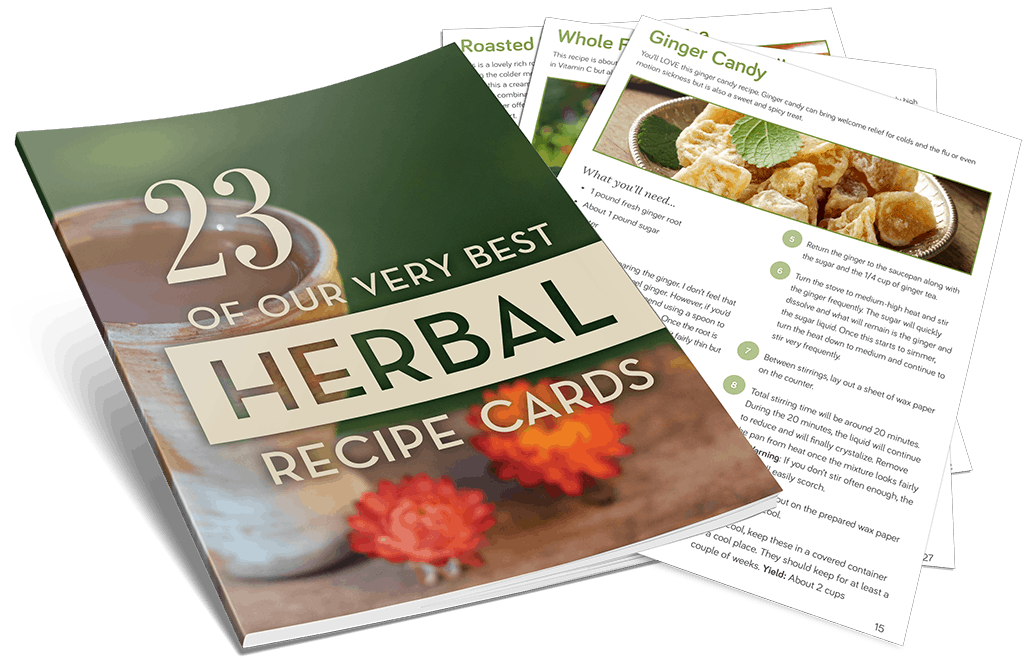


This is so crazy! I have been drinking cold tulsi tea for about two weeks (since it’s all my garden is growing in the crazy heat down here!)!! I have one question: does tulsi stimulate some people? I find that when I drink tulsi at night, I can’t sleep. I realize I could just be blaming the herbs, though ;) Is this something that you have ever seen happen? Great recipe!!
Tulsi loves this hot weather! I’ve found that tulsi can stimulate mental focus. It’s also warming and moving energetically, so perhaps that could have a stimulating effect.
When taking a hormone balancing course the instructor added schisandra berries to the afternoon elixir we made and made a remark about its uplifting properties. May this be what maybe giving the energy and Tulsi and mallow being more stimulating mucilage maybe also what keeping awake?
Regards
Shannon DeFileds
I love making lemon balm tea. Can’t wait to try this recipe!
I’m looking forward to trying this recipe. However, I don’t have any Schisandra berries, so I’m going to substitute hibiscus. I have various other herbs I will use making various different kinds and see what the effects are for me.
Great info. I didn’t know about cold infusions.
There is a time and place, and even preference, for all types of herbal medicine. As I write this, the last days of summer are noticeably here. I see it in the changing light as the long yellow hues of daylight fade earlier and earlier each night.
————-
Rosalee I have to say, I love your voice. I love that your connection to herbs come through when you write. I wanted you to know that someone sincerely appreciates that aspect, as well as the herbal wisdom you gift to the community.
Tulsi was the first herb that absolutely entranced me with scent. I just could not get enough of smelling it. I fell in love with herbs so many years ago because of it. The spicy/sweet, utterly intoxicating scent just wrapped around me and I had to know more. Tulsi really is an amazing herb, even on its own the taste is wonderful.
Thanks for your kind words Ria!
Tulsi does have an evocative scent. I was harvesting a bunch of it just last night and savoring the smell myself.
Indeed tulsi is wonderful! It is my go-to ‘bounce-back’ post-partum tea of choice. And I also love schisandra
extract so what an awesome combination tulsi and schisandra berries! Talk about a powerhouse for adrenals and overall grounding and well being. Thanks Rosalee, you so know your plants! :o)
So glad you are loving this combo too!
Rosalee I love your deep love of herbs and the sweetness that is comes through in your writing. I so very much appreciate the herbal wisdom you gift us with and your generosity of spirit.
Thank you for taking the time to post such kind words Avis!
I have been throwing a sprig of mint in my water bottle throughout the summer, yet it stil grows faster then I can use it. It works great. I am going to look for mallow now, since I am feeling the dust in the air due to the wildfires as well.
Rosalee, I was wondering if you could write about the differences and similarities between basil, Thai basil and tulsi? I have been trying to put this understanding together from this site and Wikipedia with mixed success.
I haven’t worked enough with Thai basil to give a definitive answers, but my feeling is that from a medicinal perspective, tulsi is the one that packs the most here. Culinary basil is a wonderful carminative, but isn’t known for any adaptogen qualities.
I feel in love with herbs after planting a small herb garden about 13 years ago. I planted basil, sage and rosemary, my three favorite culinary herbs. Since then my herb garden has expanded almost every year until now I have a beautiful three tiered herb garden.
I have planted so many different herbs along the way, trying new ones every year. No wonder my garden has gotten so big! My favorite tea from my garden is lemon verbena and mint. I discovered the beautiful, rich flavor of lemon verbena two years ago and haven’t been able to get my hands on a plant since. Good thing I harvested a lot of it that first year, I still have enough to maybe last me through the winter.
Thank you for all the knowledge you share about the glorious works of herbs.
Sounds like we have had similar experiences with gardening. :) My garden also continues to grow and I love being able to make teas from plants that I’ve tended. I hope you are able to find a lemon verbena again for next year. I wonder how that would be in a cold infusion?
So refreshing! Now I just need to figure out how to make my Tulsi come back year after year!
I’m in zone four and sometimes my tulsi is self-sown from the year’s previous seeds, but more often I need to start it from seeds, just like basil.
This will be a new one for me to make this weekend. I do look forward to it. As for making cold brew tea in the summer , I do several gallons a week. In fact , I will be making a new batch (gallon) in an hour or so. Between the tulsi that has generously reseeded itself. And now with the Schisandra chinensis berries ripe. It is the perfect time. thanks for the good timing of the recipe.
—
Text from https://learningherbs.com/remedies-recipes/tulsi-tea/
Copyright © 2018 LearningHerbs.